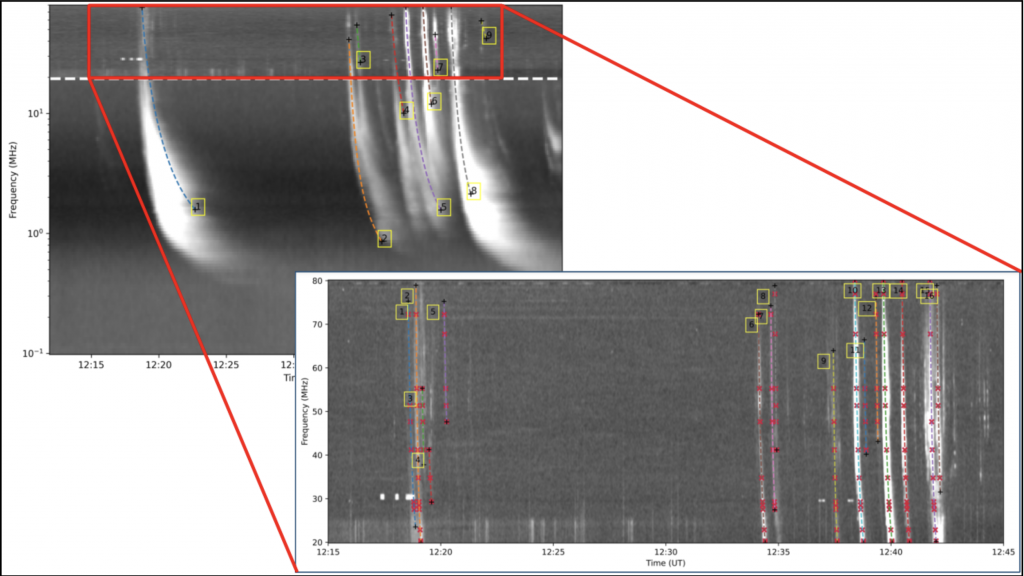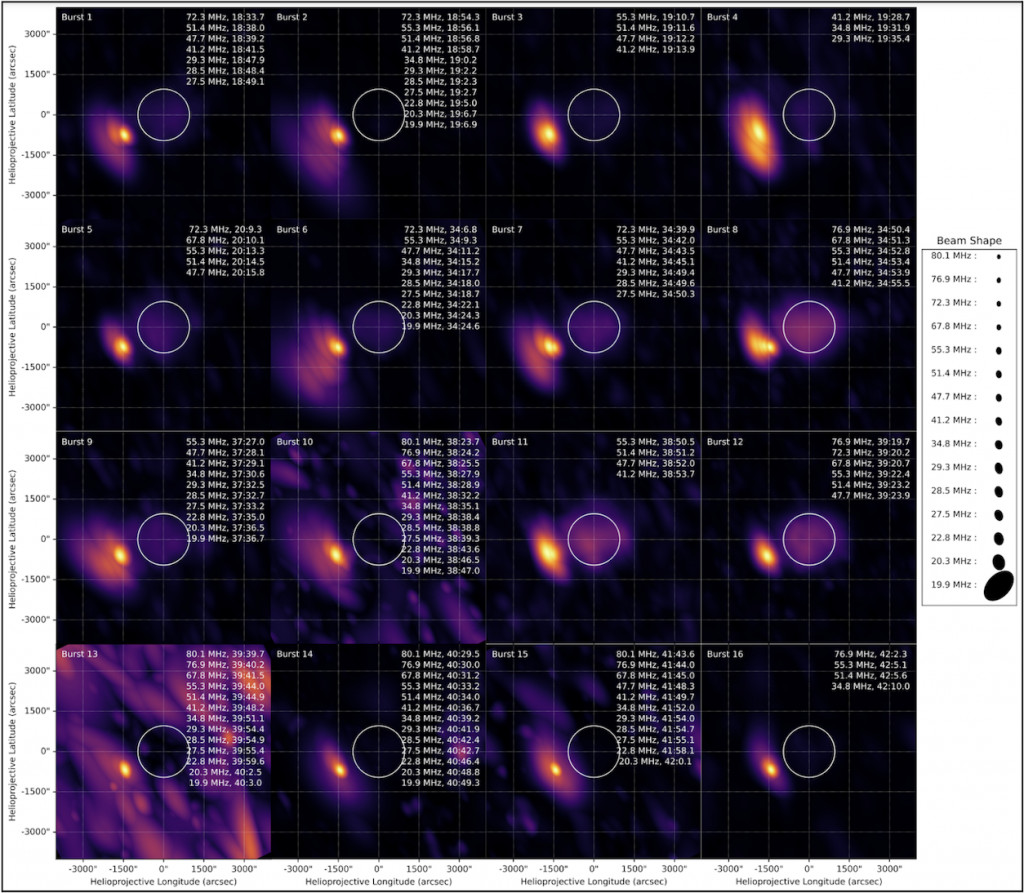Solar type III radio bursts are quite common phenomena. They are the result of accelerated electron beams propagating through the solar corona. These bursts are of particular interest as they provide valuable information about the magnetic field and plasma conditions in the corona, which are difficult to measure directly.

We have recently completed a study (Nedal et al. 2023) to investigate the ambiguous sources and underlying physical processes of the type III storm that occurred on April 3, 2019, through the utilization of multi-wavelength observations from the Low-Frequency Array (LOFAR) radio telescope and the Parker Solar Probe (PSP) space mission, as well as incorporating results from a Potential Field Source Surface (PFSS) and magnetohydrodynamic (MHD) models. The primary goal is to identify the spatial and temporal characteristics of the radio sources, as well as the plasma conditions along their trajectory. Firstly, through our automated implementation, we were able to effectively identify and characterize 9 type III radio bursts in the LOFAR-PSP combined dynamic spectrum and 16 type III bursts in the LOFAR dynamic spectrum (Figure 1). We found that the frequency drift for the detected type III bursts in the combined spectrum is ranging between 0.24 and 4 MHz/s, and the speeds of the electron beams are ranging between 0.013 and 0.12 c.

Next, we performed interferometric imaging calculations, generating a number of snapshots at different time and frequency points (red symbols on bottom right panel in Fig. 1). In Figure 2, we have shown the evolution of the 16 brightest bursts of the 30-minute storm period as persistence images. The persistence imaging technique is frequently applied to imaging time series, allowing to only retain the changes in consecutive images. In this case, the evolution of each burst can be observed in each panel. The brightness is color-coded, scaled to the brightest pixel in each panel. Our imaging observations in Fig. 2 show that the electrons responsible for these bursts originate from the same source, released within less than 30 minutes. The bursts all appear off the southeast solar limb, confirming the same origin, and they also trace similar trajectories in the corona. Finally, our analysis provided informative insights into the physical conditions along the path of the electron beams. For instance, we found that the plasma density obtained from the Magnetohydrodynamic Algorithm outside a Sphere (MAS) model is lower by two orders of magnitude than the expected theoretical density. This kind of imaging and analysis of an entire type III storm has not been done before.
